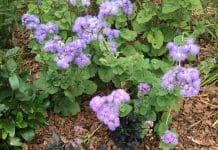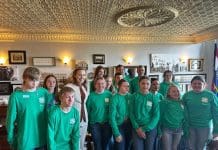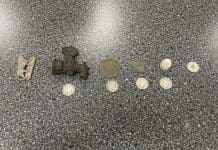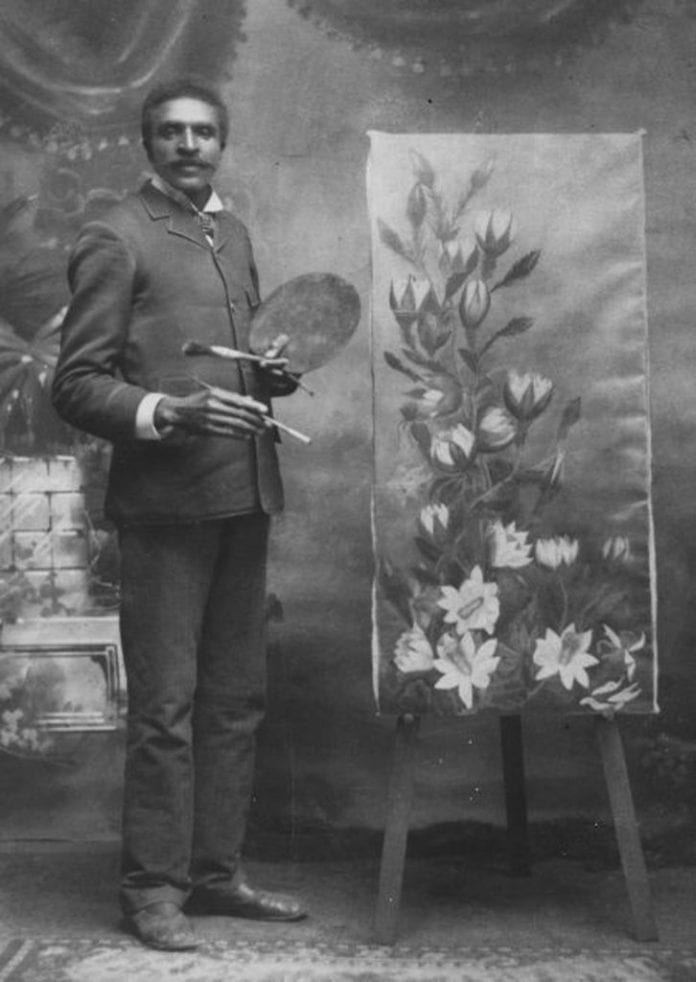As spring emerges throughout our beautiful Missouri, in celebration of National Park Week all are invited to George Washington Carver National Monument Park for “Art in the Park” on Saturday, April 20, 2019, 10:00 a.m. to 3:00 p.m. Inspired by the beautiful natural setting of George Washington Carver’s childhood home, artists are encouraged to enjoy a day of plein air painting, to display their work and to give workshops for the public. For information contact park ranger Curtis Gregory at curtis_gregory@nps.gov or (417) 325-4151.
The son of two slaves, George Washington Carver was born on the Moses and Susan Carver farm outside Diamond Grove (now known as Diamond), Missouri, near the close of the Civil War. George and his mother Mary were kidnapped and carried south to Arkansas. Though the whereabouts and fate of his mother were never discovered, George was found and brought back to the Carver home where the Carvers raised and cared for George and his brother James. George, a frail child, did not have the strength or stamina for field work and instead helped his “Aunt Susan” around the family cabin while she taught him the basics of reading and writing.
As a very young boy George knew he wanted to be an artist. A lover of the natural world, he’d often wander in woods surrounding the Carver cabin. While tending his little garden hidden in the underbrush, he found and cultivated plants to make his own paints and dyes. Observing the trees and flowers he loved, he taught himself to paint. He practiced his passion and developed his artistic skills and painted throughout his lifetime. Famously best known today for his accomplishments in education and science, George Washington Carver was a true renaissance man. In 1941 “Time” magazine named George Washington Carver a “Black Leonardo.”
George Washington Carver wrote, “As a child I had an inordinate desire for knowledge.” In time he was permitted to walk the eight miles to the Neosho Colored School in Neosho, Missouri. From there he made his way to Fort Scott, Kansas, where he cooked for a wealthy family to pay for his board, clothes and school privileges. He eventually finished high school in Minneapolis, Kansas, then entered a business college in Kansas City. Still thirsting for greater knowledge George Washington Carver sought admission to Highland College in Highland, Kansas. Refused because of his color, he traveled to western Kansas where he saw the subject of his famous “Yucca and Cactus” painting that went to the 1893 World’s Fair in Chicago.
Drifting to Winterset, Iowa, as head cook in a large hotel George Washington Carver met patrons who insisted he attend an art school. He enrolled in Simpson College in Indianola, Iowa, where he did laundry for others, crocheted all his own hose, mittens et cetera and in his words “lived on prayer, beef suet and corn meal, and quite often being without the suet and meal.” At Simpson his art teacher recognized Carver’s talent for painting flowers and plants. She encouraged him to study botany at Iowa State Agricultural College (now Iowa State University) in Ames.
In 1891 Carver was the first black student at Iowa State. His work at the experimental station in plant pathology and mycology first gained him national recognition and respect as a botanist. George Washington Carver received a Bachelor of Agriculture in 1894 and his Master of Agriculture degree in 1896. While in graduate school he taught as the first black faculty member at Iowa State.
At Tuskegee Institute (now Tuskegee University) from 1896 for forty-seven years George Washington Carver taught methods of crop rotation, introduced several alternative cash crops for farmers that would also improve the soil of areas heavily cultivated in cotton, initiated research into crop products (chemurgy) and taught generations of black students farming techniques for self-sufficiency. George Washington Carver was also a leader in promoting environmentalism.
From 1915 to 1923, George Washington Carver concentrated on researching and experimenting with new uses for peanuts, sweet potatoes, soybeans, pecans and other crops. This work and especially his speaking to a national conference of the Peanut Growers Association in 1920 and in testimony before Congress in 1921 brought him increasing renown. In these years, he became one of the most well-known African Americans of his era, though he always knew himself to be “an orphan child of a race that’s considered inferior.”
Rising from enslavement, George Washington Carver was confronted with segregation and racial prejudice throughout his life, yet time and again his resilience triumphed over adversity. His inquisitive mind, love of nature, simplistic life style, love of God and “I can” attitude left a legacy at which we still marvel. George Washington Carver’s birthplace, set in the natural world that inspired his artistry, is a sacred treasure quietly waiting to be discovered and enjoyed. Visit soon, especially on the day of “Art in the Park”, April 20, 2019.
Shared with appreciation for information found at www.nps.gov\gwca and online.

















